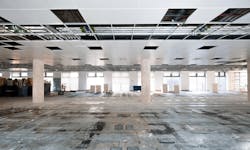Debunking 6 Myths About Office-to-Residential Conversions
With the pandemic-induced shift to remote work, not to mention the fact that office demand will probably never fully return to pre-pandemic levels, demand for office space real estate has plummeted across the U.S., particularly in the nation's downtowns. What's to be done with that underutilized office space? One option is to redevelop it into much-needed housing.
In presenting the findings from market feasibility work focused on the reuse of office buildings for residential, RCLCO debunks six myths, from: You can’t partially convert an office building ... (false), to: Conversions work in the suburbs too… (true), and provides real-world examples for each.
Most of the conversions that make the glossy magazines are very urban, but really most of the office space in America is in the suburbs, and vacancy imperative and accelerating price adjustments make these opportunities increasingly compelling. There is actually a strong market case to be made for focusing on the suburbs, both the potential favorable cost and construction dynamics and the fact that many suburban conversions will be the only new high-rise residential in their respective sub-markets, and the overall quality of the newer product make it easier to compete for upscale renters or buyers.
